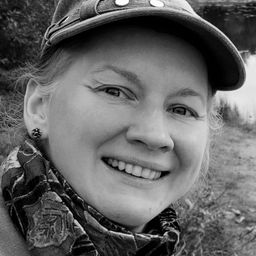Architectural heritage of textile sites in Latvia: evaluation and possibilities for reinterpretation
My Session Status
At the turn of the 19th and 20th century, the present capital of Latvia, Riga, was a major port and one of the most important industrial centres in both the Baltic region and in Russian Empire. Industrial development, regarded as controversial nowadays, was important for the urban development and social life during the 2nd part of the 20th century, too, both for the capital and for other towns. There are studies available on general industrial history of Latvia while studies of particular branches are rare: the history of transportation and of energy supply are the best covered ones. The very backbone of the manufacturing processes, the textile industry was overlooked so far; a few attempts at survey of technological history were never completed.
This paper is the first attempt to provide an insight in the historical development of textile industry in the territory of Latvia by focusing on architectural features and physical remains of mills and factories, by analysing their impact on urban space in the past and in the present, and by outlining the current challenges for maintenance, regeneration and functional transformation of the now abandoned premises of that splendid heritage. The methodology of the paper includes the studies of historical sources, archive materials, site visits and comparative. A detailed overview of architectural features of the production facilities will be provided in the paper.
The production of textiles and leather is known to be the oldest industrialized process in Latvia as it started by manufacturing of ropes for naval purposes since the 18th century. Later on, during the 19th century, the textile industry had a huge impact on how both smaller regions and larger cities developed. Factories like “Hertwig & Peiten”, “Tekstil”, Strasdenhoff mill shaped the very urban space of former vernacular areas around or nearby existing lakes and waterways. The factories were working with cotton, linen, wool, jute, and the value of production was the fourth after the metal and chemical industries, and the food production. As processed textiles were used not only for clothing production, but also for manufacturing in other industries like automotive or chemical, the textile industry held huge importance within the development of industry in general.
Despite the evacuation of industrial machinery during the WW1, the textile industry of the interwar period was among the best economic forces of the country. With the social importance of and general love for both contemporary fashion and historical crafts, textile made a very important place in public perception.
The overhaul of economic system due to soviet occupation changed drastically the scale and principles of textile industry for Latvia. The production volumes grew with the entire Soviet Union becoming a consumer for such new and expanded factories like “Ogre Textile Knitwear Factory” or “Lauma”. The scale of the new structures was huge, and the urban impact of those buildings was immense, while not always visually advantageous. The production of synthetic yarn and other new developments could be traced, too. The combination of the pre-existing range of industrial knowledge and traditions with innovation in production created a complex, character-rich social and emotional environment around the textile industry of Latvia.
Currently, there some factories still in use, while most of the structures were closed at the turn of the 20th and the 21st century, awaiting functional and architectural transformations. The historical factories of textiles and knitwear could serve as an insight into both development of clothing technology and the daily evolvement of human life itself. With several premises in the process of design for regeneration, the future is open for new social interpretation and for a

